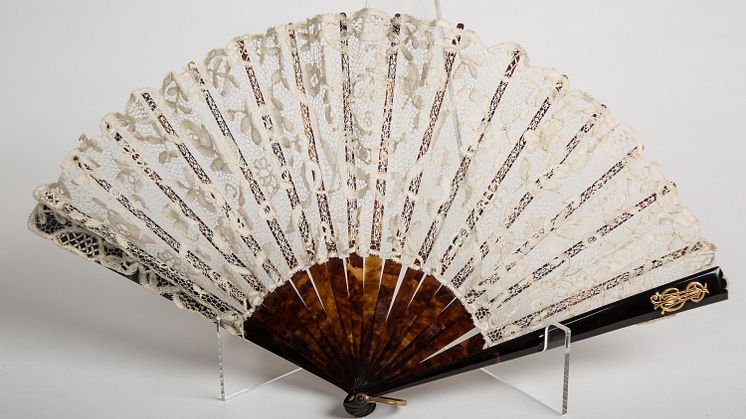Press release -
EXPERT COMMENT: Steampunk, Neo-Victorianism, and the Fantastic
Northumbria’s Dr Claire Nally, co-curator of Fabricating Histories, a new exhibition on Steampunk and Neo-Victorian culture at Newcastle's Discovery Museum (Tyne & Wear Archives and Museums), explains what steampunk is, and why it might be important…
John Clute’s book, Pardon This Intrusion: Fantastika in the World Storm (2011), defines the term ‘fantastika’ and is a useful stating point to approach steampunk, as ‘fantastika’ refers to the non-mimetic, and offers an articulation of alternative reality in fiction. Clute maintains ‘fantastika’ is marked by the visibility of ‘the engine of history, round about 1800, when the future began’. Like much Neo-Victorian fiction generally, fantastika is marked by self-conscious storytelling. In common with this, steampunk flags up its anachronism and fictionality. As such, the increased visibility of steampunk, which has exploded in recent years has presented us with an interesting development in the genre of fantastic literature.
But first of all, what do we mean by steampunk? Steampunk is a phenomenon that has emerged in recent years, in part from the goth, punk and DIY subcultures. Participants heavily invested in the scene include musicians, artists, writers and subcultural aficionados, harking back to the science, technology and aesthetics of the Victorian steam era. Steampunk re-evaluates the historical impact of industry in the nineteenth century, rendering the Victorian period relevant to the present. Basically, it is about rewriting history from the vantage point of today (so steam power is an everyday part of society, and the internal combustion engine has never been made). Time is anachronistic, with a heavy dose of science fiction attached. So often, writers are influenced by H. G. Wells, Mary Shelley, Bram Stoker, and Jules Verne, among others.
Subculture
The subcultural element of the steampunk emerges in a number of ways. In music, there are bands and singers like Abney Park, The Men that will not be Blamed for Nothing, Ghostfire and Unwoman. In magazine culture, The Steampunk Magazine offers insights into all aspects of the genre, whilst films and TV shows with a steampunk aesthetic have become more ubiquitous. The Victorian period has acquired cultural cache in our society for a number of reasons. In the 1960s, ‘hippies wore “high costume,” which included Victorian suits and dresses and military clothing’ and a similar recovery of Victoriana also influences sections of steampunk community in the present day. Steampunks garner influences from the Victorian period in their apparel – top hats, bustles, waistcoats, corsets, frock coats - but subject them to modern interpretation – so the skirts are often too short for conventional historical costume!
Literature and Popular Culture
In January 2013, Margi Murphy in The Independent heralded steampunk as ‘Britain's latest fashion craze.’ Alan Moore’s graphic novel series, The League of Extraordinary Gentlemen, is a touchstone of steampunk culture, alongside other popular developments like Guy Ritchie Sherlock Holmes films, or the visuals of the Dr Who BBC series. Certainly Justin Bieber’s music video for ‘Santa Claus is Coming to Town’ (2011) shows a debt to steampunk culture: here we have a clockwork, corseted woman, hooped skirt, waistcoats, brass and machinery. Despite these borrowings, it is worth emphasizing that steampunk culture is ‘perhaps most defined by the object-based work of its fans’ – such DIY artwork is a celebration of the uneven surface, the ways in which borrowing from Victorian machinery (cogs, brass, wood, metal) confounds the smooth lines of the Mac generation. As Onion explained: ‘The steampunk ideology prizes brass, copper, wood, leather, and papier-mâché – the construction materials of this bygone time. Steampunks fetishise cogs, springs, sprockets, wheels, and hydraulic motion. They love the sight of the clouds of steam that arise during the operation of steam-powered technology’.
Steampunk as a specifically literary term originated when the author K. W. Jeter, in a 1987 letter to science fiction magazine Locus, humorously described his novel Morlock Night as ‘gonzo-historical’ and suggested the genre, which he suspected would be the ‘next big thing’, might be called something like ‘steampunk’ – as a comedic reference to a variant on ‘cyberpunk’. From there, there has been an explosion of novels broadly embracing the steampunk – Jeter’s Infernal Devices (1987), Gibson and Sterling’s The Difference Engine (1990), which is itself an adjunct of sci-fi. This novel is a good example of rewriting history, featuring a world best described as a Victorian sci-fi nightmare, where Charles Babbage successfully created the world’s first computer. More generally, steampunk literature features dirigibles, clockwork, mad scientists, and Victorian technology, developed to an anachronistic degree. Adventure narratives, stereotypes of nineteenth–century behavioural codes – including tea drinking and duelling – are fetishised, interrogated and celebrated. Literary characters, like Sherlock Holmes, and Mina Harker, as well as historical figures, are borrowed, reconfigured, and rewritten – Ada Lovelace, whose work with Charles Babbage on calculating machines is only recently gaining popular currency, features in many examples of steampunk literature and cosplay (see Sydney Padua’sThe Thrilling Adventures of Lovelace and Babbage), as does Queen Victoria, and more broadly women scientists (as a clear departure from the historical invisibility of women in science). In many ways, steampunk presents a resistant gesture, whilst corroborating the institutions which disavowed the possibility of such figures in history – Queen Victoria’s role in the Empire hardly makes her an ambassador of progression. So in some ways, we might say practitioners reproduce historical figures, but in best practice, they also interrogate them via parody and satire.
One of the best examples of this political engagement is ‘Steampunk Emma Goldman’, whose real name is Miriam Rosenberg Rocek. She is an activist and performer in the US, using the anarcho-feminist Emma Goldman as a catalyst for discussions around gender, society and politics. In an interview I conducted with her, she explained her role as follows:
‘I try to bring all the ideas that Emma Goldman talked about into my writings and performances. That includes her feminism, her LGBT advocacy, and her belief in free love. Emma Goldman had quite an ahead-of-her-time understanding of gender and sexuality, and I try to reflect that in my portrayal of her. Moreover, I think it’s important to have a female character in a steampunk context who challenges gender roles in a way other than by taking on traditionally male roles.’
Similarly, Bryan Talbot’s Grandvilleseries of graphic novels explores the problems of racism, empire and social inequality through the use of anthropomorphism. His hero, Inspector LeBrock is a badger, and his sidekick is Roderick the Rat (a clear Holmes and Watson parody). In the course of their investigations, there is a reflection on the 9/11 bombings, including a reference to ‘Ground Zero’. The ensuing action evaluates the political rhetoric which developed after 9/11 – including the demonization of the east. Notably, the story features a politician who gains power promising a ‘War on Terror’, not a far remove from the Blair-Bush campaign against Afghanistan and Iraq. Talbot uses an alternative history to discuss cultural identity, and the effect is we reconsider the idea of selfhood and racial otherness. Additionally, we have the steampunk adaptations of literary characters in Alan Moore’s The League of Extraordinary Gentlemen, which provides another careful reflection on the dangers of Victorian empire-building. The distinction between Neo-Victorianism, or historical fiction, and steampunk, however, is the use of technology – Alan Moore’s Nautilus, or Talbot’s use of steam-powered roller boots and automations, all point to a steampunk universe.
Technology and Retro-Aesthetics
Steampower exerts a powerful fascination in the steampunk community. For instance, what a number of steampunk art practitioners do is take something from our modern day culture, such as the computer, and retro-fit it, or imagine its aesthetic value when invested with nineteenth century images. Datamancer’s steampunk computers for instance, quite clearly reference a bygone era in their design, but make full use of modern technological developments. In design terms, these are practical everyday objects, converted to a Steampunk aesthetic – wood, brass, cogs, the inner working of machines – and all link back to Victorian design. Babbage’s Analytical Engine is crucial here: brass, wood, cogs and gears, intricate detail are replicated in steampunk artistic practice. Of course, many steampunk items are custom-made and marketed through the possibilities allowed by Web 2.0 sites such as Etsy’s craft community, promoting as it does an international network of small businesses and collective engagement: ‘Web 2.0, as an approach to the web, is about harnessing the collective abilities of the members of an online network, to make an especially powerful resource or service.’. Such a platform fosters the creativity and networking potential of many designers and creators.
***
Claire's article was originally published at Interesting Literature. Click here to read the original.
Fabricating Histories: An Alternative 19th Century opens at Discovery Museum, Newcastle, on 12 November 2016 and runs until May 2017. Click here to find out more.
Topics
Categories
Northumbria is a research-rich, business-focused, professional university with a global reputation for academic excellence. To find out more about our courses go to www.northumbria.ac.uk
If you have a media enquiry please contact our Media and Communications team at media.communications@northumbria.ac.uk or call 0191 227 4571.











